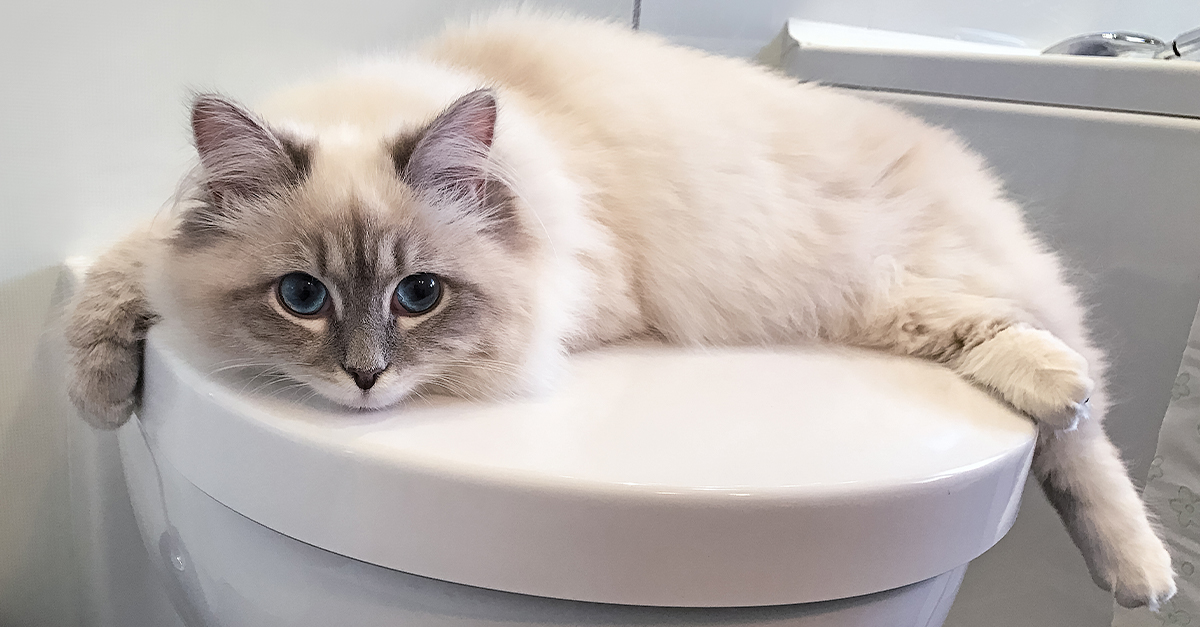Are you currently on the lookout for critical information about Don’t flush cat feces down the toilet?

Intro
As cat proprietors, it's vital to be mindful of exactly how we dispose of our feline buddies' waste. While it may seem hassle-free to flush cat poop down the toilet, this method can have detrimental consequences for both the atmosphere and human health and wellness.
Ecological Impact
Flushing pet cat poop presents unsafe virus and parasites into the water system, posing a significant threat to aquatic communities. These impurities can negatively influence aquatic life and concession water high quality.
Health and wellness Risks
Along with environmental concerns, flushing cat waste can also pose wellness threats to people. Feline feces might include Toxoplasma gondii, a bloodsucker that can cause toxoplasmosis-- a possibly severe disease, especially for expectant females and people with damaged immune systems.
Alternatives to Flushing
Luckily, there are safer and more accountable methods to deal with feline poop. Take into consideration the adhering to choices:
1. Scoop and Dispose in Trash
The most usual technique of taking care of pet cat poop is to scoop it right into a biodegradable bag and throw it in the trash. Be sure to use a devoted litter inside story and deal with the waste immediately.
2. Use Biodegradable Litter
Go with biodegradable feline trash made from products such as corn or wheat. These clutters are environmentally friendly and can be securely dealt with in the trash.
3. Bury in the Yard
If you have a lawn, take into consideration hiding pet cat waste in an assigned area away from veggie yards and water sources. Make certain to dig deep adequate to prevent contamination of groundwater.
4. Install a Pet Waste Disposal System
Invest in a pet garbage disposal system especially made for cat waste. These systems utilize enzymes to break down the waste, reducing odor and ecological impact.
Verdict
Responsible animal possession extends past supplying food and shelter-- it likewise includes correct waste administration. By refraining from purging cat poop down the commode and going with different disposal approaches, we can minimize our environmental impact and secure human health and wellness.
Why Can’t I Flush Cat Poop?
It Spreads a Parasite
Cats are frequently infected with a parasite called toxoplasma gondii. The parasite causes an infection called toxoplasmosis. It is usually harmless to cats. The parasite only uses cat poop as a host for its eggs. Otherwise, the cat’s immune system usually keeps the infection at low enough levels to maintain its own health. But it does not stop the develop of eggs. These eggs are tiny and surprisingly tough. They may survive for a year before they begin to grow. But that’s the problem.
Our wastewater system is not designed to deal with toxoplasmosis eggs. Instead, most eggs will flush from your toilet into sewers and wastewater management plants. After the sewage is treated for many other harmful things in it, it is typically released into local rivers, lakes, or oceans. Here, the toxoplasmosis eggs can find new hosts, including starfish, crabs, otters, and many other wildlife. For many, this is a significant risk to their health. Toxoplasmosis can also end up infecting water sources that are important for agriculture, which means our deer, pigs, and sheep can get infected too.
Is There Risk to Humans?
There can be a risk to human life from flushing cat poop down the toilet. If you do so, the parasites from your cat’s poop can end up in shellfish, game animals, or livestock. If this meat is then served raw or undercooked, the people who eat it can get sick.
In fact, according to the CDC, 40 million people in the United States are infected with toxoplasma gondii. They get it from exposure to infected seafood, or from some kind of cat poop contamination, like drinking from a stream that is contaminated or touching anything that has come into contact with cat poop. That includes just cleaning a cat litter box.
Most people who get infected with these parasites will not develop any symptoms. However, for pregnant women or for those with compromised immune systems, the parasite can cause severe health problems.
How to Handle Cat Poop
The best way to handle cat poop is actually to clean the box more often. The eggs that the parasite sheds will not become active until one to five days after the cat poops. That means that if you clean daily, you’re much less likely to come into direct contact with infectious eggs.
That said, always dispose of cat poop in the garbage and not down the toilet. Wash your hands before and after you clean the litter box, and bring the bag of poop right outside to your garbage bins.
https://trenchlesssolutionsusa.com/why-cant-i-flush-cat-poop/

As a passionate reader on How to Dispose of Cat Poop and Litter Without Plastic Bags, I assumed sharing that piece of content was important. Are you aware of somebody who is fascinated with the niche? Be sure promote it. I praise you for your time. Come back soon.
Contact Us Now